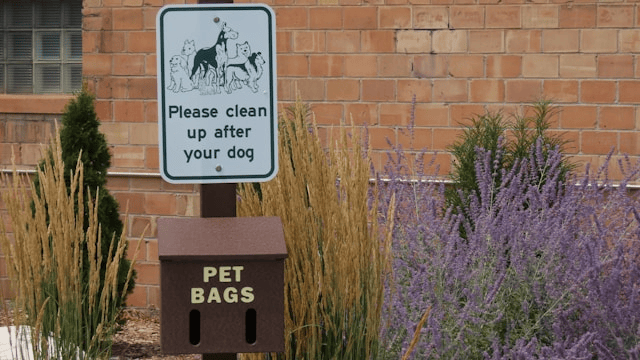Your yard should be a safe haven where your pet can play, relax, and explore freely. But before you let your furry friend roam outdoors, it’s important to ensure the space is secure and free from potential hazards. Whether you have a curious kitten, an energetic dog, or multiple pets, learning how to pet-proof your yard is essential for their well-being and your peace of mind.
In this guide, we’ll walk you through everything you need to know about creating a pet-safe landscaping environment that’s secure, comfortable, and enriching for your animal companions.
Why Pet-Proofing Matters
Pet-proofing your yard isn’t just about keeping your dog from digging up the flower bed. It’s about creating a space that minimizes risk, supports your pet’s health, and reduces the chance of escapes or accidents. Outdoor hazards such as toxic plants, sharp tools, exposed wires, or weak fencing can all pose serious threats. By taking the time to prepare your yard properly, you can create a safe environment where your pets can enjoy the outdoors stress-free.
Secure the Perimeter
One of the first steps to a secure yard for dogs or other pets is making sure your boundaries are pet-proof.
Fencing
-
Height: Depending on your pet’s size and breed, fence height matters. A 6-foot fence is generally sufficient for most dogs, but some high-jumpers may need taller barriers.
-
Material: Choose a solid material that can’t be chewed through, such as wood or vinyl. Avoid chain-link fences for dogs who like to climb.
-
Gaps: Make sure there are no wide gaps where small pets can squeeze through.
-
Digging Prevention: Install chicken wire or concrete at the base of the fence to deter diggers.
Gates and Locks
Ensure that gates close securely and cannot be pushed open. Consider adding child-proof or pet-proof locks to keep your pets from nudging gates open with their paws or noses.
Remove Toxic Plants and Chemicals
Many common garden plants and lawn care products are dangerous for animals. If you’re serious about pet-proofing your yard, start by identifying and removing harmful substances.
Toxic Plants to Avoid
Some plants can cause anything from mild stomach upset to severe poisoning. Avoid planting or remove the following:
-
Sago palm
-
Oleander
-
Azalea
-
Lilies (especially dangerous for cats)
-
Foxglove
-
Daffodils
-
Tulips
Always cross-check new plants before adding them to your landscape to ensure they’re non-toxic for pets.
Pet-Safe Alternatives
Choose pet-friendly options like marigolds, snapdragons, sunflowers, or herbs like basil and rosemary. For ground cover, opt for clover, Irish moss, or creeping thyme, which are soft on paws and generally non-toxic.
Lawn and Garden Chemicals
Avoid using chemical fertilizers, pesticides, or herbicides that may be harmful. Look for organic or pet-safe lawn treatments. Always follow the label instructions and keep pets off treated areas until they’re dry and safe.
Create a Pet-Friendly Landscape
Good pet-safe landscaping supports your pet’s natural instincts while keeping them safe. Think of your yard as a mini adventure park designed with your pet in mind.
Pet Paths and Play Areas
Dogs often create their own paths by running the same routes. You can design these into your yard by placing gravel, mulch, or paving stones to guide their movement. Set up a designated play area with toys, balls, or even a mini agility course.
Digging Zones
If your dog loves to dig, give them a dedicated digging zone. Fill a sandbox with loose soil or sand, and hide toys or treats to make it a fun, focused space.
Shaded Spots and Rest Areas
Provide shady areas where your pet can cool off during hot days. Trees, umbrellas, pergolas, or pet-safe outdoor shelters are great options. Add cozy beds or outdoor cushions for extra comfort.
Prevent Hazards
Safety is about removing potential threats both obvious and hidden.
Tools and Equipment
Store all gardening tools, sharp objects, and outdoor equipment out of reach in a locked shed or storage box. Loose wires, cords, or hoses should be secured or covered to prevent chewing or tripping.
Pools and Water Features
Uncovered pools or ponds can be dangerous, especially for small pets. Use pet-safe covers, add fencing around the water feature, or install ramps that allow pets to exit easily if they fall in.
Compost and Garbage
Keep compost bins and garbage containers secured and inaccessible. Rotting food, mold, and certain items like coffee grounds or grapes are highly toxic to pets.
Add Enrichment and Comfort
Outdoor time should be as enriching as it is safe. Enhance your yard with features that stimulate your pet’s senses and make the space feel like their own.
Toys and Structures
Place a variety of weather-resistant toys outside to keep pets mentally and physically stimulated. For dogs, consider tunnels, platforms, or a digging pit. Cats may enjoy climbing structures or safe perches.
Water and Hydration
Always have fresh water available. Outdoor pet water fountains are a fun, functional way to keep your pets hydrated.
Weather-Proofing
In hot climates, provide shade, cooling mats, and plenty of water. In colder areas, consider insulated pet shelters and keep an eye out for ice or antifreeze spills, which are toxic to animals.
Special Considerations
Every pet is different, and your approach to pet-proofing should take into account your pet’s age, breed, and behavior.
-
Puppies and kittens are naturally more curious and require more supervision.
-
Older pets may need ramps or softer surfaces.
-
High-energy breeds may benefit from agility structures or daily enrichment games.
-
Escape artists need extra-secure fencing and surveillance.
Final Thoughts
Learning how to pet-proof your yard is a vital part of responsible pet ownership. By securing your perimeter, avoiding toxic plants, preventing hazards, and creating a pet-safe landscaping environment, you give your pet the freedom to enjoy the outdoors safely.

